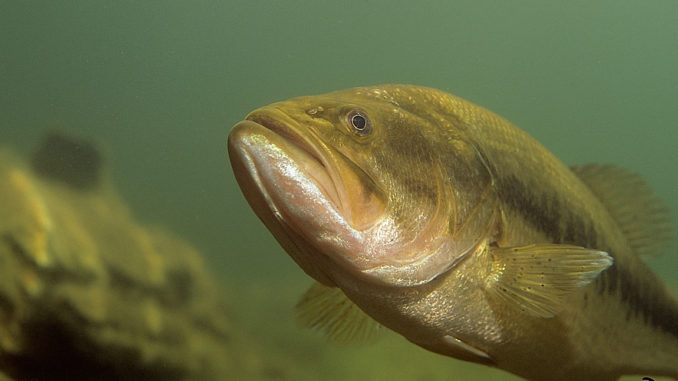
Using the right lure is key this month
February isn’t a month that a lot of bass fishermen mark on their calendars as time on the water not to be missed, but those guys would be wrong.
With the amount of daily sunlight getting greater and greater, and with temperatures occasionally moving almost to acceptable levels, bass will begin to stir and think about filling their bellies with the spring spawn a month to six weeks away.
This is the time when I put away my jigging spoons and heavy rods and break out a crankbait, because bass are usually in or close to deep water, looking up toward the surface, waiting for an easy meal.
The key to catching a nice bag of February bass is to cover a lot of water and discover the pattern they’re using. Bass can be anywhere from the main-lake to pockets halfway back in major creeks, to secondary points and coves in creeks. They can be in 10 feet of water, 25 feet or water or 35 feet of water, but they’ll come up and smack a well-presented crankbait when the opportunity presents itself.
Normally, you have to be fishing close to deep water to catch bass this month. And you want to have your boat sitting over deep water, but within a long cast of the bank. Bass want to be in a place where they can move up quite a bit vertically while not travelling very far horizontally. They will be on the steep side of pockets when they’re in pockets, on the rocky side or steep side of points, or on a good channel drop.
Normally, you’re not going to catch 20 pounds in one spot, but what you’re going to find is that groups of fish will move into the same areas. If you get in one of those areas, you may go down a couple hundred yards of bank or rip-rip or around a point and catch two or three. When that happens, don’t go anywhere. Just turn around and fish back down the same bank, or fish back around the same point. There is a reason why those fish are there, and there won’t be just one of them.
I’ve fished this kind of late-winter pattern for years; sometimes it begins in late January, and it will usually last until March. The fishing can be very productive, and this year, when I go back out on the BASS Elite Series, I’m going to look for that kind of bite, but I’ll be packing a new weapon.
For years, this kind of bite was made for a Shad Rap, but I’m going to fish Berkley’s new Bad Shad. It’s similar to a Shad Rap; it’s a minnow bait, and it’s meant to be fished slowly for bass that haven’t really shook off the winter doldrums. The No. 5 Bad Shad runs about 6 feet deep, and the No. 7 Bad Shad runs about 8 feet deep.
The big difference is the action of the bait. Instead of the bait’s tail slicing through the water, the Bad Shad’s tail does a circle, and it produces a really nice action. It’s got a different roll and wobble, and that gives it a different vibration; I’ve had fish come up out of 25 feet of water to hit it. We only had a few of them out last year, but I know of four tournaments in North Carolina alone that were won on this bait. This year, there should be plenty of them around for everybody.
One thing the Bad Shad has going for it is that you can fish it on baitcasting tackle, and that’s important because you’re covering a lot of water looking for the fish. Lew’s makes a 61/2-foot David Fritts Crankin’ Rod, and that’s what I’ll throw it on, with a 5.1-to-1 Lew’s BB1 reel that picks up 21 inches per turn of the handle. I like to fish it on 10-pound Trilene, but if I need to wind it a little deeper, I’ll go down to 8-pound Trilene.
This bait works best when you wind it back slowly. I like to fish it with a slow, steady wind, but when it’s really cold, and you’ve got shad dying, I like to wind it down, then pull it with the rod and wind up the slack. Pull and wind up slack. Pull and wind up slack. It’s almost like fishing a suspending jerkbait, because you can let a Bad Shad sit and it will suspend.
Last year, the gold color was the big winner — and that color is always good in cold water, but you can fish the crawfish colors, the reds, and the shad colors. All of them should be really good in February and on into the early spring. I think it’s one of the best baits I’ve ever thrown.




Be the first to comment